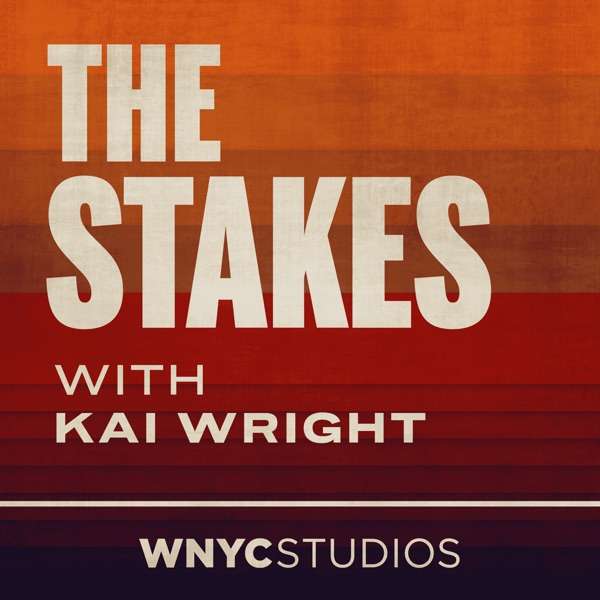Welcome, come on in, grab your favorite beverage of choice and hunker down in a comfy seat because today I have a bit of a different interview for you…..yes it may be a little deep regarding artistic approaches and creativity with forging. I have invited Daniel Miller from Waynesville North Carolina to read an article he wrote and published in the Anvils Ring back in 2002. When I first read, the article titled "The Least of These" I was emotionally moved and connected to it on so many levels and I just had to talk to Daniel about reading it for us and to further discuss his approach to forging. I hope you enjoy it, I plan to have him read some more of his articles about a few of his forging projects.
A re-write, done in September of 2016, of the article Daniel Miller wrote for the Spring 2002 edition of the "Anvil's Ring".
"The Least of These" : One smith's wonderings and wanderings about why and for whom he keeps doing this work.
By Daniel Miller
"We have taken a great social movement and turned it into a tiresome little aristocracy working with high skill for the very rich."
When I came across this rather despairing and depressing remark in the lead essay for a catalog which accompanied a recent show at the American Craft Museum, it jumped off the page at me, for it so clearly stated a problem that has gnawed at my conscience for many years. The author of this remark was C. R. Ashbee, one of the founders of the Arts and Crafts movement in England, which thrived between the 1880's and around 1915. He was commenting on the devolution of that movement, which had originally been envisioned as a means to ennoble, empower, and enrich the lives of common people by bringing simple, but beautifully designed and made craft objects within their reach.
Many of us run into the sad paradox that the better our work becomes, the less accessible it becomes to anyone whose financial means remotely resembles our own. My sense of discomfort with this paradox, and an accompanying sense of guilt, or at least complicity, grew as I watched what seemed like a commendable desire on my part—to have each piece I make be better, more complex, perhaps even more consequential than the last—placing my work beyond the reach of anyone but "the very rich". At one point, when my father asked me about a rather extensive (for me) architectural project I was doing, I replied, "the assignment is 'make us something that makes us look much richer than we looked last year.'" My father chided me for being cynical. I responded that I was just being accurate, but in hindsight, I realize that he was right. My discomfort or guilt had started to express itself as cynicism—that sure sign of emotional retreat and surrender.
My first response (a knee-jerk one) to my realization about where this kind of work was taking me was a decision to redirect my efforts—no more bidding on large ostentatious architectural jobs. Instead of decorating gigantic architectural wedding cakes with flourishes of wrought iron icing, I would try to make small nourishing whole grain wrought iron buns and muffins. I would excavate my soul and try to bring forth some nourishment. This change did seem to be a positive step. I was finally making work that meant much more to me—some of which seemed to expose my interior to me with more clarity that I would ever have expected to be possible. But I soon discovered that it still didn't address the basic problem. The sheer work, combined with the new effort of exploration, innovation, and blind wandering that these pieces required of me made my "wrought iron icing projects" seem downright efficient. Well, that's a bit of an exaggeration, but the bottom line was that the work of my new direction was no more accessible to people of average, or less than average means than my earlier work had been. The problem seemed insoluble. What had once been a simple penchant for trying to stretch the envelope of my work had become an addiction. If I wouldn't allow my work to become simpler, easier, more efficient, or repeated, my dream of an egalitarian and accessible art form would fade ever farther into the distance.
As with almost all of the solutions to the consequential problems in my life, this one was presented to me, not constructed by me, and as usual, I didn't recognize it at first. The Episcopal Cathedral in a nearby city got in touch with me about my making a Pascal Light for them. I was told that a Pascal Light is a large candle stand for a very large candle used as part of the worship service from the night before Easter until Pentecost. It is also lit and used at all baptisms and all funerals. I realized, with a bit of trepidation, that I was being called upon to make a functional object that would be one of the central symbolic participants in a very public, communal rite of passage—the Easter service. But I was more concerned that I was to try to make an object, which, if it did its job, might bring insight, and lend emotional support to two other much more personal and private rites of passage—one joy-filled and celebratory; a baptism: and the other serious and difficult; a funeral. To do a piece like this justice, I would have to find, or conjure images and a form that would be able to convey, or embody, the ideas associated with the various uses of a Pascal Light. They include both the light and the dark sides of the Easter observances, as well as the ideas of birth and death, as seen from the vantage point of the gathering of a family. My job was to come up with images and forms that could be incorporated into a Pascal Light, that would be able to express these ideas and concerns.
I remembered that several years earlier I had made a small table in which I had explored many of these same ideas. It had been commissioned by a cousin of mine whom I had re-met, after many years, at family reunion. Considering our relationship, and the reunion at which we had re-found each other, it seemed a good idea to use the making of this table as an opportunity to try to explore the whole idea of family. At that large family reunion, I had been struck by the how clearly the family members there fell into three distinct groups—the children, the parents, and the grandparents. This is of course not a very remarkable observation; but I had never noticed it so clearly before because this was the first reunion I had been to as a member of anything other than the "children's'" group, and children—rightfully—are too busy racing around and having fun to be making observations. Now that I was in the "parents'" group, and looking at the whole gathering rather abstractly, I could see that each group had a very different and separate function or job to do in relation to this whole thing called family. The children's function was much more an issue of being rather than doing. They were that which gives the family a future—which keeps it alive. The grandparents' function (at its best) seemed to me to be an interior one—an assessment of what life had meant, with the hopes of passing some insights and genuine help to the parents and children. Otherwise, they were working on closing the circle of their lives— hopefully, with grace. And in that particular environment, I couldn't help seeing my own function as primarily being the link between the children and the elders, while at the same time being called upon to build something that might be called my own life.
So, it was with these ideas in mind that I set out to make the table that would be called "Three Generations in A Gyre". A "gyre" is a spinning thing. This seemed to be an apt metaphor for all the families I had known—with each member spinning out his or her own life, yet always in relation to and influenced (for better or worse) by the other members spinning out theirs. And all of this within the edifice of that larger spinning thing—the family— held together, at the least, by shared DNA, and at the best (for the lucky ones) by love.
With these ideas in mind it becomes rather easy to "read" this table. It is of course, first of all, simply a functional object. But it is also a re-presentation—a snapshot made of iron—presenting to me again what I observed and then felt, at that reunion. The three legs give a body to those three noted generations. The tapered, hoop-like bands give arms to those bodies, which describe the function or job I saw each generation trying to do. The elders are just about to close their circles. My generation is relating the elders to the children. And the children—without a function that supports the structure yet—are simply reaching. They stand there with arms outstretched, in that immediately recognizable "pick me up right now" pose. The varying lengths, and degree of completeness of the three hoop, or arm forms give an impression of growth and upward motion, while the tight twists hint at an individual and overall spinning motion.
There is surely a risk that the "reading" of the forms and images in a table like this may become too clear, maybe even a little dull. But the first time I looked at this table completed, I couldn't help sensing the presence of a little serpent in this garden, which I didn't understand. The objects toward which the child's outstretched arms were reaching looked quite undeniably like wounds.
It wasn't until a year later, when I learned that my father had prostate cancer, that the significance of these wounds throughout the form of my table about family became clearer. The table now came to stand for me as an emblem of the nature of the extremely close relationship my father and I had with each other. We, of course, knew one another's strengths—since everyone is willing to communicate about, and share their strengths. But, extraordinarily, we so trusted each other that we were able and willing to share, and expose, and explore one another's weaknesses, dark places, and even wounds. So now the table had become a portrait of my own family—as a very simple three-legged structure, whose ability to penetrate and be penetrated, supported a platform upon which a feast could be served.
The fact that this table, which had so kindly and effectively helped me deal with a very difficult rite of passage of my own, would sit silently in the home of the person who had commissioned it never seemed quite right to me. I felt that if it had helped me in this way, it might be able to help others, but now it seemed to be almost hidden. It's therefore not surprising that, as I worked on drawings for the Pascal Light, images from that three-legged portrait of a family, which I had made several years earlier kept coming to mind.
I had said very little about the symbolism of the table to the person who had commissioned it. Some images are too difficult, even if they live only in a symbolic world. So it was with a bit of trepidation that I showed a picture of this table, along with my drawings for the Pascal Light to the Dean of the Cathedral, and to the lady who had originally contacted me about it, and who also wanted to commission its making. I realized immediately, to my great relief, that they both were smitten, not with discomfort, but with a sense of recognition and familiarity. To my surprise, I found that this image—as abstract and distilled as it was—served them in exactly the same way it served me. It seemed to concretize and clarify a few of the ungraspable emotions which death makes more urgent, regarding both the potential and the genuine difficulties in achieving any real communication with our loved ones. Both of them spoke of how this piece seemed to directly address some of their own acquaintances and family members—both the fortunate ones, who had been able not to hide (or hide from) their own weaknesses and wounds, as well as the less fortunate ones, who had lived hidden, unshared lives.
This project seemed a kind of milestone for me, in that the level of clear communication of my own emotions was so high; but I still thought that it didn't address the gnawing problem of my best and most extreme work only being available to people of extreme means. But even this resolved itself, albeit unexpectedly. The Dean had asked if I would bring the Pascal Light to his adult Sunday school class and try to share some of my ideas about it with them. Before the class convened, the large group got together for coffee, doughnuts, and conviviality. As I waited in the cloister, a young woman haltingly stepped out, spilling half her coffee. She was homeless, and clearly very mentally and physically challenged. She limped over to look more closely at this strange piece of ironwork, and smiled at it, and then at me. In a flash ,it struck me that this Pascal Light literally belonged to this woman just as much as it belonged to the Dean, or to the lady who had commissioned and paid for it. I couldn't believe my good fortune: Finally a solution.
I so wanted to convey my happiness at this realization to the lady who had commissioned the piece but was a bit concerned that it might be taken as ingratitude. I decided to risk it, although I was not at all prepared for her response. "Oh no," she said, "it belongs much more to her than it does to me because she has suffered so much more for it."
Guest Links:
Daniel Miller's website http://millermetalsmith.com/gallery/index.php
Sponsor for today: ABANA, www.abana.org

 Our TOPPODCAST Picks
Our TOPPODCAST Picks  Stay Connected
Stay Connected







